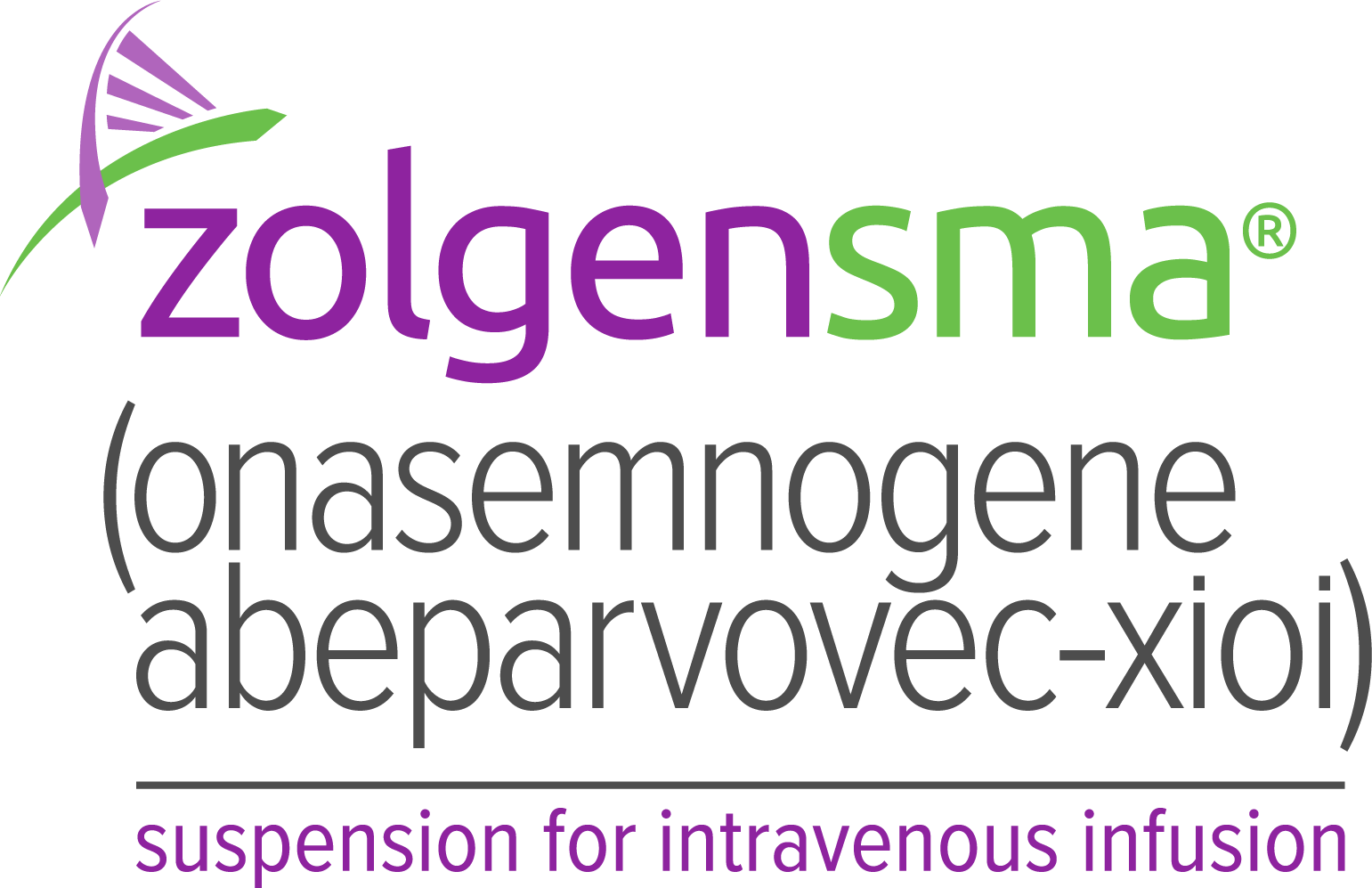Steps to treatment: Dosing
ZOLGENSMA is a one-time-only intravenous infusion1
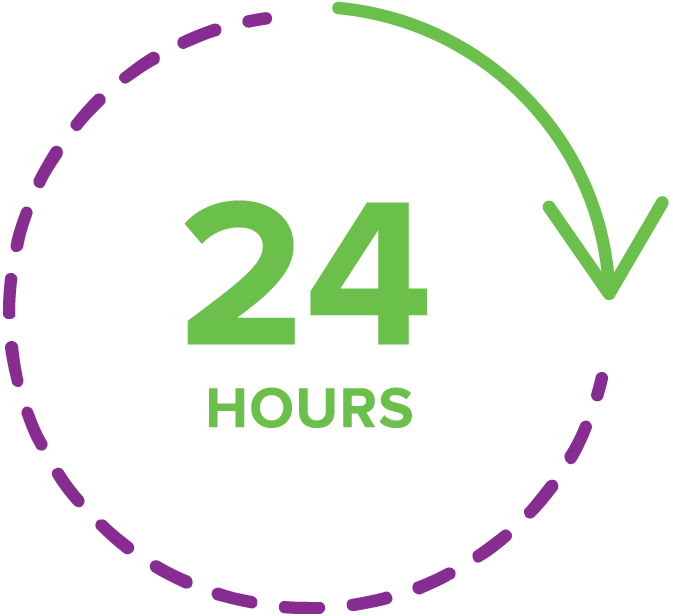
Treat patients with systemic corticosteroids (equivalent to oral prednisolone at 1 mg/kg/day) 24 hours before ZOLGENSMA infusion. Continued corticosteroid treatment is required following infusion.
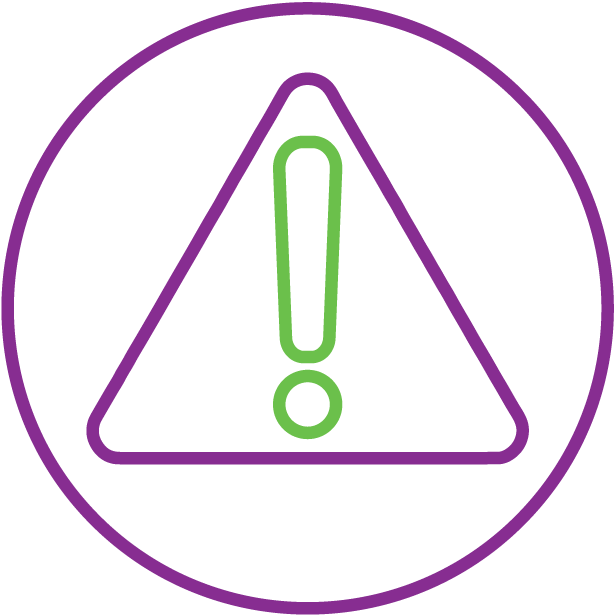
Clinical signs or symptoms of infection should not be evident at the time of ZOLGENSMA infusion.
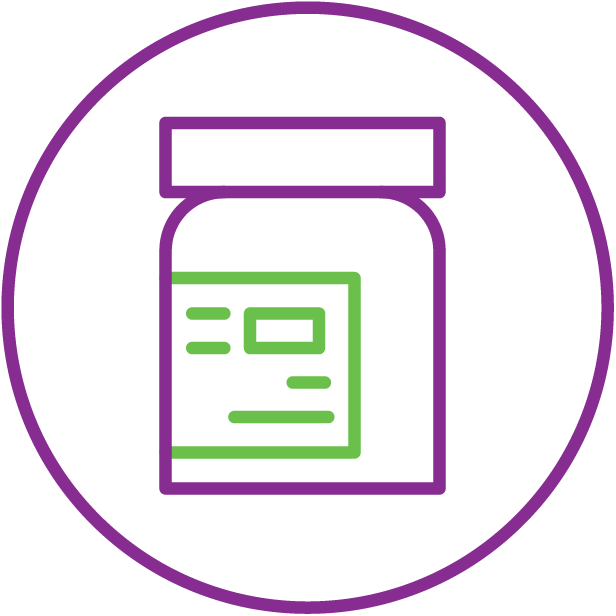
ZOLGENSMA is provided as a kit customized to meet the weight-based dosing requirements of each patient.
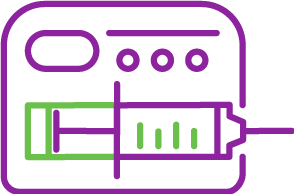
ZOLGENSMA is a suspension administered as a single intravenous infusion over 60 minutes. Insertion of a backup catheter prior to administration is recommended.
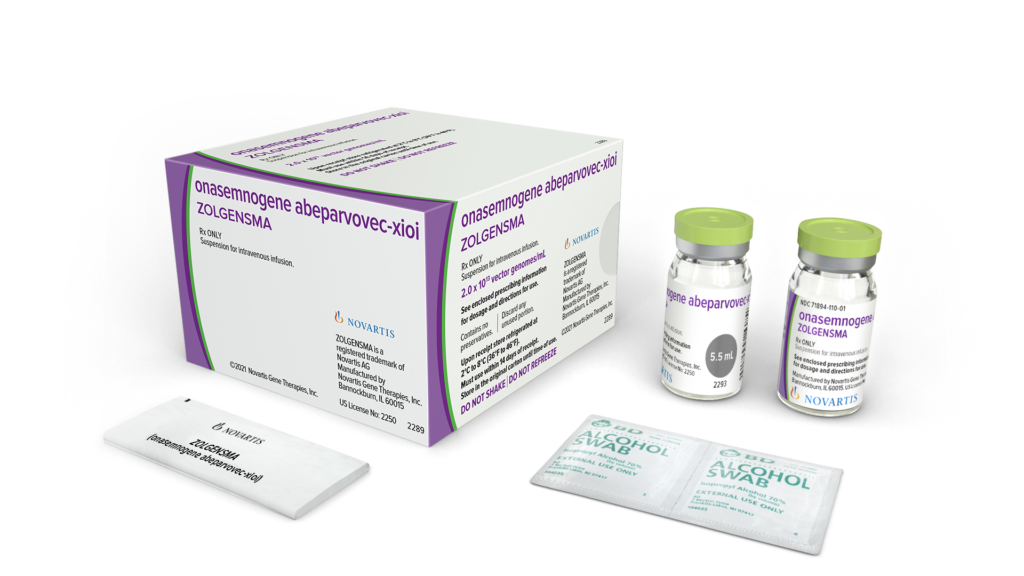
For single-dose intravenous infusion only1
Administer ZOLGENSMA to patients who are clinically stable in their overall baseline health status. Postpone infusion in patients with infections until the infection has resolved and the patient is clinically stable. Clinical signs or symptoms of infection should not be evident at the time of ZOLGENSMA infusion.
ZOLGENSMA is a suspension administered as an intravenous infusion over 60 minutes. A programmable syringe pump should be used to infuse the full volume of ZOLGENSMA.
How ZOLGENSMA is supplied
ZOLGENSMA Dosing And Kit Sizes
| Patient Weight Range (kg) | Dose Volumea (mL) | Total Vials Per Kitb | NDC Numbers | Patient Weight Range (kg) | Dose Volumea (mL) | Total Vials Per Kitb | NDC Numbers |
|---|---|---|---|---|---|---|---|
| 2.6-3.0 | 16.5 | 2 | 71894-120-02 | 12.1-12.5 | 68.8 | 9 | 71894-139-09 |
| 3.1-3.5 | 19.3 | 3 | 71894-121-03 | 12.6-13.0 | 71.5 | 9 | 71894-140-09 |
| 3.6-4.0 | 22.0 | 3 | 71894-122-03 | 13.1-13.5 | 74.3 | 9 | 71894-141-09 |
| 4.1-4.5 | 24.8 | 3 | 71894-123-03 | 13.6-14.0 | 77.0 | 10 | 71894-142-10 |
| 4.6-5.0 | 27.5 | 4 | 71894-124-04 | 14.1-14.5 | 79.8 | 10 | 71894-143-10 |
| 5.1-5.5 | 30.3 | 4 | 71894-125-04 | 14.6-15.0 | 82.5 | 10 | 71894-144-10 |
| 5.6-6.0 | 33.0 | 4 | 71894-126-04 | 15.1-15.5 | 85.3 | 11 | 71894-145-11 |
| 6.1-6.5 | 35.8 | 5 | 71894-127-05 | 15.6-16.0 | 88.0 | 11 | 71894-146-11 |
| 6.6-7.0 | 38.5 | 5 | 71894-128-05 | 16.1-16.5 | 90.8 | 11 | 71894-147-11 |
| 7.1-7.5 | 41.3 | 5 | 71894-129-05 | 16.6-17.0 | 93.5 | 12 | 71894-148-12 |
| 7.6-8.0 | 44.0 | 6 | 71894-130-06 | 17.1-17.5 | 96.3 | 12 | 71894-149-12 |
| 8.1-8.5 | 46.8 | 6 | 71894-131-06 | 17.6-18.0 | 99.0 | 12 | 71894-150-12 |
| 8.6-9.0 | 49.5 | 6 | 71894-132-06 | 18.1-18.5 | 101.8 | 13 | 71894-151-13 |
| 9.1-9.5 | 52.3 | 7 | 71894-133-07 | 18.6-19.0 | 104.5 | 13 | 71894-152-13 |
| 9.6-10.0 | 55.0 | 7 | 71894-134-07 | 19.1-19.5 | 107.3 | 13 | 71894-153-13 |
| 10.1-10.5 | 57.8 | 7 | 71894-135-07 | 19.6-20.0 | 110.0 | 14 | 71894-154-14 |
| 10.6-11.0 | 60.5 | 8 | 71894-136-08 | 20.1-20.5 | 112.8 | 14 | 71894-155-14 |
| 11.1-11.5 | 63.3 | 8 | 71894-137-08 | 20.6-21.0 | 115.5 | 14 | 71894-156-14 |
| 11.6-12.0 | 66.0 | 8 | 71894-138-08 | – | – | – | – |
aDose volume is calculated using the upper limit of the patient weight range for pediatric patients less than 2 years of age between 2.6 kg and 21.0 kg.
bAll vials have a nominal concentration of 2.0 × 1013 vector genomes (vg) per mL. Each vial of ZOLGENSMA contains an extractable volume of not less than either 5.5 mL or 8.3 mL.
Download the ZOLGENSMA Treatment Guide
Take an in-depth look at the steps to treatment and learn how to store, handle, and infuse ZOLGENSMA.
The recommended dose of ZOLGENSMA is 1.1 × 1014 vector genomes per kilogram (vg/kg) of body weight. Review the ZOLGENSMA Treatment Guide and the Full Prescribing Information for further dosing details.1
ZOLGENSMA Treatment Guide
The recommended dose of ZOLGENSMA is 1.1 × 1014 vector genomes per kilogram (vg/kg) of body weight.
Review the ZOLGENSMA Treatment Guide and the Full Prescribing Information for further dosing details.1
See the preparation, dosing, and infusion process for ZOLGENSMA
Transcript
Learn how to successfully prepare, dose, and infuse ZOLGENSMA® (onasemnogene abeparvovec-xioi).
ZOLGENSMA is a gene therapy for the treatment of pediatric patients less than 2 years of age with spinal muscular atrophy (SMA).
ZOLGENSMA has a Boxed Warning for Serious Liver Injury and Acute Liver Failure. Please see additional Important Safety Information at the end of this video. Please also see the Full Prescribing Information at ZOLGENSMA-hcp.com.
ZOLGENSMA is a vector-based gene therapy that utilizes a type of adeno-associated virus called AAV9 to deliver a functional copy of the human SMN gene with a continuous promoter.
As a gene therapy, the recommended dose of ZOLGENSMA is measured in vector genomes, or vg, and is dosed based on body weight. ZOLGENSMA is provided as a kit containing 1 alcohol wipe per vial, the Full Prescribing Information, a helpful quick reference guide, and 2 or more clear, single-use, 10-mL vials, containing either 5.5 mL or 8.3 mL of product, with a nominal concentration of 2.0 x 1013 vg/mL.
Each kit contains a unique combination of these vials, customized to meet dosing requirements based on the weight of each patient. It is best to confirm the patient’s current weight prior to treatment, so that the appropriate dose is shipped.
Before infusing ZOLGENSMA, let’s review the 5-step process for a one-time-only dose. This process is also highlighted in the ZOLGENSMA Treatment Guide, which can be found at ZOLGENSMA-hcp.com.
Step 1: Confirm diagnosis and run laboratory tests.
Prior to infusion, the prescribing physician should have confirmed a diagnosis using genetic tests for bi-allelic mutations in the SMN1 gene, measured the patient’s weight in kilograms to determine the appropriate dose, performed baseline testing for the presence of anti-AAV9 antibodies, performed baseline tests for liver function, creatinine, complete blood count (including hemoglobin and platelet count), and troponin-I to establish reference values for each, and, evaluated liver function with a clinical exam and laboratory testing of aspartate aminotransferase (AST), alanine aminotransferase (ALT), total bilirubin, albumin, prothrombin time, partial thromboplastin time, and international normalized ratio or INR.
Step 2: Store and handle ZOLGENSMA properly.
ZOLGENSMA is shipped in a special container and delivered frozen at negative 60 degrees Celsius, or negative 76 degrees Fahrenheit, or less. Do not refreeze. It should be refrigerated immediately upon receipt, at 2 to 8 degrees Celsius (or 36 to 46 degrees Fahrenheit), and protected from light.
ZOLGENSMA is stable at this temperature for up to 14 days from receipt. ZOLGENSMA is a suspension for intravenous infusion.
The contents of the ZOLGENSMA kit will thaw in the refrigerator and be ready for patient infusion in approximately 16 hours. Alternatively, you can thaw ZOLGENSMA at room temperature and be ready for patient infusion in approximately 6 hours.
ZOLGENSMA is a clear to slightly opaque, colorless to faint white liquid, free of particles. You should inspect ZOLGENSMA visually for particulate matter and discoloration prior to infusion. Do not use if particulates or discoloration are present.
Do not shake ZOLGENSMA.
Step 3: Premedicate and plan for infusion day.
To manage potential elevations in hepatic aminotransferases, all patients should receive systemic corticosteroids, equivalent to oral prednisolone at 1 mg/kg/day, beginning 24 hours before ZOLGENSMA infusion and continuing for a minimum of 30 days.
If oral corticosteroid therapy is not tolerated, consider intravenous corticosteroids as clinically indicated.
In addition to initiating the corticosteroid regimen, ensure patients have been tested for the presence of anti-AAV9 antibodies and assessed for baseline liver function, complete blood count (including hemoglobin and platelet count), and creatinine and troponin-I levels.
Administer ZOLGENSMA to patients who are clinically stable in their overall baseline health status.
Postpone infusion in patients with infections until the infection has resolved and the patient is clinically stable.
Step 4: Prepare and infuse ZOLGENSMA.
Do not use ZOLGENSMA unless it is thawed. If thawed in the refrigerator, remove ZOLGENSMA from the refrigerator on the day of dosing.
Draw up the appropriate dose volume from all vials into a syringe.
Next, remove the air from the syringe. Cap the syringe and deliver it to the patient treatment location at room temperature. Once the dose is drawn into the syringe, it must be used within 8 hours.
To infuse ZOLGENSMA, place a primary catheter in a peripheral vein in the arm or leg—insertion of a backup catheter is strongly recommended. And, as with other infusion procedures, use the appropriate guards, gowns, and aseptic technique when preparing and infusing ZOLGENSMA.
Program the syringe pump for saline priming or prime tubing manually with saline. When primed, attach the syringe containing ZOLGENSMA and reprogram the pump for ZOLGENSMA infusion. ZOLGENSMA should be infused slowly, over 60 minutes. At the end of the infusion, flush the line with saline.
Step 5: Monitor and postmedicate after ZOLGENSMA infusion.
After infusion, lab tests will need to be continued on a regular basis over a 3-month period or longer, as directed in the ZOLGENSMA Prescribing Information.
Monitor platelet count and troponin-I at baseline and weekly for the first month after infusion.
Continue to monitor platelet count every other week for the second and third months following infusion or longer until levels return to baseline. Monitor troponin-I once a month for the second and third months following infusion or longer until levels return to baseline.
Monitor liver function at baseline and weekly during corticosteroid treatment, including the taper period.
If the patient is clinically stable with unremarkable findings at the end of the corticosteroid taper period, continue to monitor liver function every other week for another month.
In addition to monitoring, the daily, systemic corticosteroid treatment regimen initiated 24 hours prior to infusion will need to continue. Be certain to reinforce with caregivers that it is important to continue the daily corticosteroid dose as prescribed by the physician.
After 30 days, the recommended corticosteroid regimen varies based on the patient’s liver function assessment. Do not stop systemic corticosteroids abruptly. For patients with unremarkable findings, the corticosteroid can be tapered gradually over the next 28 days. If liver function abnormalities persist, continue systemic corticosteroids as described in the prescribing information and consult a pediatric gastroenterologist or hepatologist. Please refer to the ZOLGENSMA Treatment Guide and Full Prescribing Information to learn more about dosing, infusing, and monitoring.
Systemic corticosteroid regimen1
To help manage a possible increase in liver aminotransferases following infusion with ZOLGENSMA, all patients should receive systemic corticosteroids prior to and following ZOLGENSMA infusion, as recommended:
The recommended treatment regimen is detailed in the Prescribing Information and in the accompanying chart.
If oral corticosteroid therapy is not tolerated, consider intravenous corticosteroids as clinically indicated.
Monitor liver function for at least 3 months following ZOLGENSMA infusion and at other times as clinically indicated. a
Monitor liver function weekly during corticosteroid course and taper period.
If the patient is clinically stable with unremarkable findings at the end of the corticosteroid taper period, continue to monitor liver function every other week for another month.
ALT=alanine aminotransferase; AST=aspartate aminotransferase; ULN=upper limit of normal; INR=international normalized ratio.
aLiver function assessment includes a clinical exam and laboratory testing of AST, ALT, total bilirubin, prothrombin time, and INR.
Day 1: 24 hours prior to infusion
Initiate systemic corticosteroid regimen equivalent to oral prednisolone at 1 mg/kg/day.
Day 2: Infusion day
Infuse ZOLGENSMA and continue the corticosteroid regimen.
Day 30: 28 days after infusion
Check liver status clinically and by assessing ALT, AST, total bilirubin, prothrombin time, and INR.
Do not stop systemic corticosteroids abruptly.
If unremarkable (normal clinical exam, total bilirubin, prothrombin time, and INR; ALT and AST levels below 2 × ULN):
- Then taper the corticosteroid dose gradually over the next 28 days
If liver function abnormalities are present:
- Consult a pediatric gastroenterologist or hepatologist
- Continue systemic corticosteroids (equivalent to oral prednisolone at 1 mg/kg/day) until AST and ALT values are both below 2 × ULN and all other assessments return to normal range
- Then taper the corticosteroid dose gradually over the next 28 days or longer if needed
30-day monitor following steroid taper
Once the patient is clinically stable with unremarkable findings at the end of the taper period continue to monitor liver function every other week for another month.
Reference: 1. ZOLGENSMA [prescribing information]. Bannockburn, IL: Novartis Gene Therapies, Inc; 2023.
